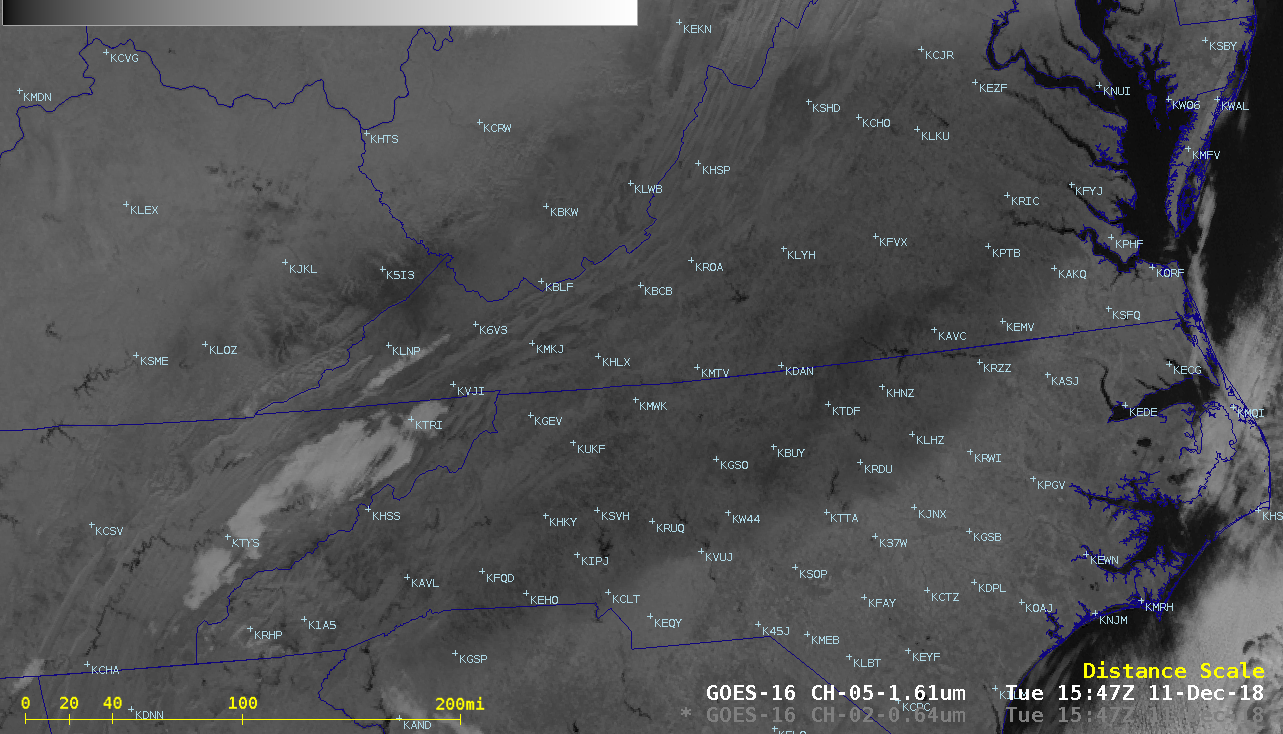Winter storm affecting the southern Plains to the Mid-Atlantic
GOES-16 Mid-level Water Vapor (6.9 µm) images, with hourly plots of surface weather type [click to play MP4 animation]
As much as 10-11 inches of snow fell in the Lubbock, Texas area during 07-08 December. A sequence of Suomi NPP VIIRS Visible (0.64 µm) and Near-Infrared “Snow/Ice” (1.61 µm) images (below) showed the snow cover melting from 09-10 December. Snow cover absorbs radiation at the 1.61 µm wavelength, so it appears very dark on those images.
Portions of northern and northeastern Arkansas received ice accrual of up to 0.5 inches due to freezing rain — those areas with snow and ice on the ground can be seen in a comparison of Suomi NPP VIIRS Visible (0.64 µm) and Near-Infrared “Snow/Ice” (1.61 µm) images (below). Significant snowfall resulted across the central Appalachians and Mid-Atlantic, especially for so early in the winter season — 1-minute Mesoscale Domain Sector “Red” Visible (0.64 µm) images (below) revealed embedded convective elements and banding that helped to enhance snowfall rates across that region on 09 December. GLM Groups are also plotted on the images; however, there was no satellite signature of lightning associated with the convective elements until 2130 UTC in north-central North Carolina.GOES-16 “Red” Visible (0.64 µm) images, with plots of hourly surface weather type in yellow and GLM Groups in red [click to play MP4 animation]
Updated snowfall analysis for the December 8-10, 2018 winter storm as of 7 am this morning. This does not include any additional snow that has fallen since 7 am. Also, here is how the seasonal snowfall totals look as of this morning. pic.twitter.com/JGcEnNS8nV
— NWS Eastern Region (@NWSEastern) December 10, 2018
===== 11 December Update =====

GOES-16 “Red” Visible (0.64 µm) and Near-Infrared “Snow/Ice” (1.61 µm) images [click to play animation | MP4]



![Suomi NPP VIIRS Visible (0.64 µm) and Near-Infrared "Snow/Ice" (1.61 µm) images [click to enlarge]](https://cimss.ssec.wisc.edu/satellite-blog/wp-content/uploads/sites/5/2018/12/181209_viirs_visible_snowIce_AR_anim.gif)